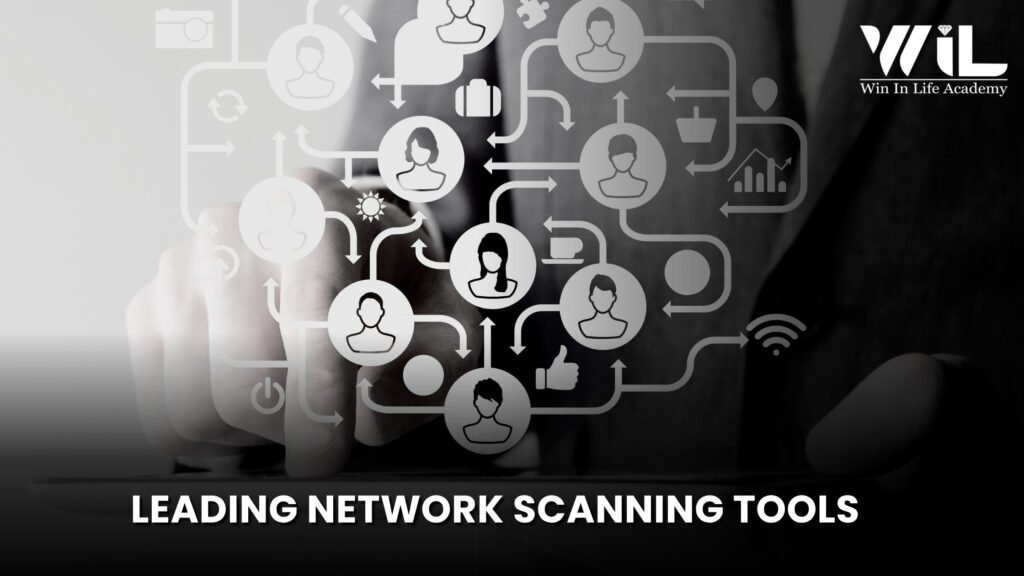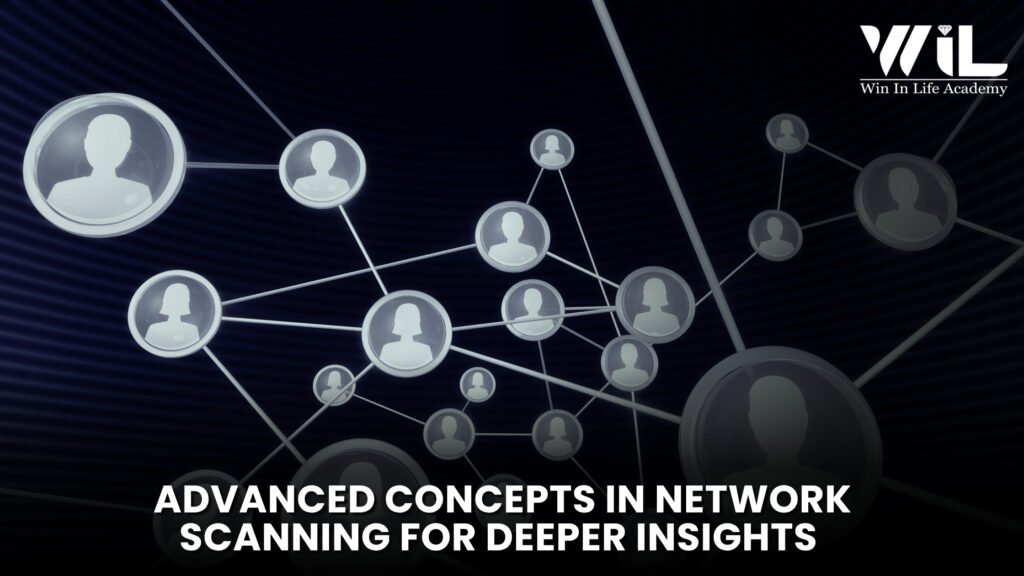For aspiring and seasoned ethical hackers alike, the foundational pillar upon which all advanced assessments are built is network scanning. This indispensable process allows security professionals to meticulously map out a target network’s topology, identify active devices, open ports, available services, and potential vulnerabilities. Without a comprehensive understanding of network scanning, any subsequent penetration testing or security analysis would be related to navigating a blindfolded labyrinth.
This comprehensive guide delves into the multifaceted domain of network scanning within ethical hacking. We will dissect its methodologies, explore its critical importance, and illuminate the powerful tools that empower ethical hackers to gain unparalleled insights into network infrastructures. Whether you’re a beginner taking your first steps into cybersecurity or a seasoned professional looking to refine your skill set, mastering network scanning is non-negotiable for achieving peak performance in the realm of ethical hacking.
Enroll Now: Ethical Hacking Course
Understanding Network Scanning Fundamentals
Network scanning is a systematic process of exploring a network to gather information about its structure, active hosts, and the services running on them. Think of it as a reconnaissance mission before a strategic operation. Before an ethical hacker can attempt to exploit a vulnerability, they must first identify what exists within the network’s digital perimeter.
The fundamental objective of network scanning is to discover the “attack surface” of an organization. This includes everything from identifying unauthorized devices connected to the network to pinpointing misconfigured services that could serve as entry points for cyber attackers. Effective network scanning provides a comprehensive blueprint of the target environment, enabling ethical hackers to formulate precise and effective testing strategies.
Why Network Scanning is Paramount in Ethical Hacking?

The significance of network scanning in ethical hacking cannot be overestimated. It serves as the initial and often most crucial phase of any penetration test or vulnerability assessment. Here’s why it’s a strategic imperative:
- Discovery of Active Devices: Before you can assess the security of a device, you need to know it’s there. Network scanning identifies all active hosts within a specified IP range, including servers, workstations, routers, switches, and even IoT devices.
- Port and Service Enumeration: Every service on a network communicates through a specific port. Scanning reveals which ports are open on discovered hosts and what services are listening on those ports (e.g., HTTP on port 80, SSH on port 22, FTP on port 21). This information is vital for understanding potential avenues of attack.
- Operating System Fingerprinting: Advanced scanning techniques can often deduce the operating system running on a target host. Knowing the OS (e.g., Windows Server, Linux, Cisco IOS) helps ethical hackers tailor their subsequent attacks to specific known vulnerabilities of that OS.
- Vulnerability Identification: By identifying open ports and services, network scanning lays the groundwork for vulnerability scanning. For instance, an outdated web server running on an open port might be susceptible to known exploits.
- Network Mapping and Topology: Scans help create a visual or logical map of the network, showing how devices are interconnected. This understanding of network topology is crucial for planning attack paths and understanding the potential impact of a breach.
- Security Posture Assessment: Regular network scanning helps organizations understand their current security posture, identify shadow IT, and ensure compliance with security policies. From an ethical hacker’s perspective, it reveals the organization’s adherence (or lack thereof) to best security practices.
Without this initial phase of detailed information gathering, ethical hacking becomes a game of chance, rather than precision science.
Essential Network Scanning Techniques
Ethical hackers employ a variety of techniques to conduct effective network scans. These techniques often vary in the stealth, speed, and depth of information they reveal.
- Ping Sweeps (ICMP Scans): The simplest form of network scanning, a ping sweep, uses ICMP (Internet Control Message Protocol) to echo requests to determine which hosts are active on a network. While effective for basic host discovery, many networks block ICMP, making this technique less reliable for comprehensive scans.
- TCP Connect Scans: This technique involves attempting to complete a full TCP three-way handshake with a target port. When the handshake is completed, the port is open. This is a reliable but often noisy method, leaving connection logs on the target system.
- SYN Scans (Half-Open Scans): Also known as “stealth scans,” SYN scans send a SYN (synchronize) packet but do not complete the three-way handshake if a SYN/ACK is received. Instead, the scanner sends an RST (reset) packet. This method is often less detectable by firewalls and intrusion detection systems (IDS) because it doesn’t establish a full connection.
- UDP Scans: Unlike TCP, UDP (User Datagram Protocol) is a connectionless protocol. UDP scans send UDP packets to target ports. If no “ICMP port unreachable” message is received, the port is likely open or filtered. This can be slower and less reliable than TCP scans, as there’s no inherent acknowledgment mechanism.
- Xmas Scans, FIN Scans, NULL Scans: These are more advanced and stealthy TCP scanning techniques that manipulate TCP flags (FIN, URG, PSH) to elicit responses from target ports, often bypassing firewalls.
- ARP Scans: Used for discovering hosts on a local network (LAN), ARP (Address Resolution Protocol) scans map IP addresses to MAC addresses. This is particularly useful for identifying devices within the same broadcast domain.
The choice of scanning technique depends on the objective, the network environment, and the need for stealth. Often, a combination of these techniques is used to achieve the most comprehensive results.
Leading Network Scanning Tools

While manual scanning techniques are valuable for understanding the underlying principles, ethical hackers heavily rely on sophisticated tools to automate and enhance their reconnaissance efforts. Several powerful utilities have become industry standards due to their versatility, efficiency, and comprehensive feature sets.
Nmap: The Network Mapper
Nmap (Network Mapper) stands as an undeniable network scanning tool. This open-source utility is an indispensable asset for any ethical hacker, offering an unparalleled array of features for host discovery, port scanning, service detection, OS fingerprinting, and vulnerability detection. Nmap’s flexibility and powerful scripting engine (Nmap Scripting Engine – NSE) make it adaptable to virtually any network reconnaissance scenario.
Key Features:
- Host Discovery: Uses various techniques (ICMP echo requests, TCP SYN pings, ARP requests) to identify live hosts.
- Port Scanning: Supports all major TCP and UDP scanning types (SYN, Connect, UDP, FIN, Xmas, NULL, etc.) for comprehensive port enumeration.
- Service Version Detection: Actively queries open ports to determine the exact application name and version running on them (e.g., Apache HTTPD 2.4.52, OpenSSH 8.9p1). This is critical for identifying known vulnerabilities associated with specific software versions.
- Operating System Fingerprinting: Attempts to determine the OS and its version based on unique network responses.
- Nmap Scripting Engine (NSE): This powerful feature allows users to write or use pre-existing scripts to automate a wide range of tasks, including vulnerability detection, backdoor discovery, brute-forcing, and advanced service enumeration.
- Output Formats: It can give output results in various formats, including XML, plain text, and greppable, facilitating easy integration with other tools and reporting.
Practical Nmap Examples:
- sS 192.168.1.1/24: Perform a stealthy SYN scan on the entire subnet.
- sV -p 80,443,22 192.168.1.100: Scan specific ports (80, 443, 22) on a host and detect service versions.
- O 192.168.1.100: Attempt to identify the operating system of the host.
- script http-enum 192.168.1.100: Use an NSE script to enumerate common web application directories.
Nmap’s command-line interface, while initially difficult for beginners, offers granular control and immense power, making it a cornerstone for professional ethical hackers.
Advanced IP Scanner
For users who prefer a graphical interface and a more straightforward approach, Advanced IP Scanner is an excellent choice, particularly for Windows environments. It’s a fast, free, and user-friendly network scanner that quickly identifies all network devices, shared folders, FTP resources, and provides remote control capabilities. While not as feature-rich as Nmap for deep-dive analysis, it’s highly effective for quick network discovery and asset management.
Key Features of Advanced IP Scanner:
- Fast Network Scanning: Quickly scans large IP ranges to discover active devices.
- Shared Folder Detection: Identifies shared network folders, which can be a source of data leakage if not properly secured.
- FTP, HTTP, HTTPS Resource Discovery: Locates web and FTP servers.
- Remote Control Integration: Allows for remote access via RDP and Radmin, streamlining IT administration tasks.
- Wake-on-LAN: Can wake up remote computers.
- User-Friendly Interface: Intuitive GUI makes it accessible for less experienced users.
Use Cases for Advanced IP Scanner:
- Quickly auditing a small office network for active devices.
- Identifying open shares and potential data exposure.
- Locating network devices without needing complex command-line syntax.
While not a penetration testing tool in itself, Advanced IP Scanner can be a valuable preliminary reconnaissance tool, helping ethical hackers quickly identify potential targets before diving into more complex analysis with tools like Nmap.
IP Scan
Another efficient and often free tool for network discovery, IP scan (often referring to various simple IP scanners or tools with “ipscan” in their name) provides basic yet effective functionality for host and port discovery. These tools are typically lightweight and focus on quickly identifying live hosts and open ports within a specified IP range.
Key Features of IP Scan-type Tools:
- Simple Interface: Generally, offer a clean, uncluttered interface.
- Basic Host Discovery: Primarily focused on ping sweeps and identifying active IPs.
- Port Checking: Some versions offer basic port scanning capabilities.
- Speed: Designed for rapid scanning of subnets.
Use Cases for IP Scan:
- Rapidly check if the host is online.
- Identify all active IPs in a small network segment.
- As a quick troubleshooting tool for network connectivity.
It’s important to note that “IPscan” can refer to a multitude of similar tools, and their capabilities can vary. However, their common thread is providing quick, basic network reconnaissance.
MSP Vulnerability Scanner
Beyond fundamental network discovery, ethical hacking extends to identifying specific weaknesses within identified systems. This is where MSP vulnerability scanner tools become indispensable. While not strictly “network scanners” in the same vein as Nmap (which identifies what is there), these tools leverage the information gathered by network scanning to then actively probe for known security flaws. Managed Service Providers (MSPs) frequently use these scanners to provide security services to their clients, highlighting their importance in a professional context.
Key Features of MSP Vulnerability Scanners:
- Automated Vulnerability Detection: Scans identified systems for thousands of known vulnerabilities against a comprehensive database (CVEs – Common Vulnerabilities and Exposures).
- Configuration Auditing: Checks for insecure configurations, default credentials, and policy violations.
- Patch Management Integration: Often links with patch management systems to identify missing security updates.
- Compliance Reporting: Generates reports that help organizations adhere to regulatory compliance standards (e.g., HIPAA, PCI DSS).
- Risk Prioritization: Helps prioritize vulnerabilities based on severity, exploitability, and potential impact.
- Reporting and Remediation Guidance: Provides detailed reports on identified vulnerabilities along with actionable steps for remediation.
Examples of MSP Vulnerability Scanners (often used by MSPs):
- Nessus: A widely recognized vulnerability scanner with a comprehensive plugin library.
- OpenVAS: An open-source vulnerability scanner, often used as an alternative to Nessus.
- Qualys Guard: A cloud-based vulnerability management solution.
- Rapid7 Nexpose: Another leading vulnerability management platform.
How MSP Vulnerability Scanners Integrate with Network Scanning:
The workflow typically involves:
- Network Scanning: Using tools like Nmap or Advanced IP Scanner to identify active hosts and open ports.
- Vulnerability Scanning: Feeding the identified hosts and ports into an MSP vulnerability scanner (like Nessus) to actively probe for known weaknesses on specific services and systems.
This two-pronged approach ensures that not only are all network assets discovered, but their security posture is also thoroughly evaluated against a vast landscape of known threats.
Advanced Concepts in Network Scanning for Deeper Insights

Beyond the basic techniques and tools, ethical hackers often employ advanced concepts to gain even deeper insights and bypass sophisticated defenses.
- Firewall Evasion Techniques: Many firewalls are configured to block common scanning techniques. Ethical hackers learn to employ fragmentation, decoy IP addresses, source port manipulation, and other methods to bypass these defenses.
- IDS/IPS Evasion: Intrusion Detection Systems (IDS) and Intrusion Prevention Systems (IPS) are designed to detect and block malicious scanning activity. Ethical hackers utilize techniques like slow scanning, randomizing scan order, and using legitimate-looking traffic patterns to avoid detection.
- Banner Grabbing: This technique involves connecting to a port and extracting information about the service running on it directly from the application’s “banner” (e.g., “Apache/2.4.52 (Unix)” This provides quick and direct service identification.
- Service Enumeration (Beyond Banners): When banner grabbing isn’t sufficient, more active probing is required to determine the exact service and version. Tools like Nmap’s service version detection leverage a vast database of signatures to identify services.
- Vulnerability Mapping: After identifying open services and their versions, ethical hackers cross-reference this information with vulnerability databases (like CVEs) to find publicly known exploits for those specific versions.
- Scripting Automation: For large networks or repetitive tasks, ethical hackers often write scripts (e.g., in Python or Bash) to automate sequences of scans and analysis, making the process more efficient and scalable.
Mastering these advanced concepts allows ethical hackers to conduct more thorough, stealthy, and effective reconnaissance, crucial for uncovering hidden vulnerabilities in complex network environments.
The Ethical Imperative: Responsible Network Scanning
While network scanning is a powerful tool for ethical hackers, it comes with a significant responsibility. It’s crucial to adhere to strict ethical guidelines to ensure that your actions are legal, authorized, and do not cause harm.
- Obtain Explicit Authorization: NEVER perform network scanning on systems or networks you do not own or have explicit, written permission to test. Unauthorized scanning can be considered cybercrime and lead to severe legal consequences.
- Define Scope Clearly: Before commencing any scan, the scope of the assessment must be clearly defined and agreed upon with the client or network owner. This includes IP ranges, types of scans allowed, and any restrictions on timing or methods.
- Understand Potential Impact: Be aware that certain aggressive scanning techniques can potentially disrupt network services or trigger security alerts. Plan scans during off-peak hours and communicate potential risks to the client.
- Respect Privacy: Do not access or store any sensitive data found during a scan without explicit permission. The goal is to identify vulnerabilities, not to exfiltrate information.
- Report Responsibly: Any vulnerabilities discovered must be reported responsibly and confidentially to the appropriate stakeholders, along with clear remediation recommendations.
- Continuous Learning: The cybersecurity landscape is constantly evolving. Ethical hackers must continuously update their knowledge of new scanning techniques, tools, and vulnerabilities to remain effective and responsible.
Adhering to these ethical principles ensures that network scanning remains a valuable tool for enhancing security, rather than a vector for misuse.
The Future of Network Scanning
The evolution of network infrastructure, cloud computing, IoT, and sophisticated attack techniques constantly reshape the landscape of network scanning.
- Cloud Environment Scanning: Traditional on-premises scanning techniques are adapting to the complexities of cloud environments (AWS, Azure, GCP), requiring new approaches to discover and assess virtualized resources.
- IoT Security: The proliferation of IoT devices presents new challenges and opportunities for network scanning, as these devices often have weak security configurations and are difficult to patch.
- AI and Machine Learning in Scanning: The integration of AI and ML is making scanners more intelligent, capable of identifying anomalies, and predicting potential vulnerabilities with greater accuracy.
- Continuous Monitoring: The trend is moving from periodic scans to continuous, real-time monitoring of network assets for changes and emerging threats.
- Attack Surface Management (ASM): Network scanning is a critical component of broader Attack Surface Management strategies, which aim to continuously discover, inventory, classify, and secure all digital assets.
Ethical hackers must stay beside these developments to maintain their effectiveness in securing ever-more complex and distributed networks.
To Sum Up
Network scanning is not merely a technical skill; it’s an art form of digital reconnaissance, providing the critical intelligence necessary to defend against sophisticated cyber threats. From the foundational principles of host and port discovery to the advanced applications of tools like Nmap, Advanced IP Scanner, IPscan, and specialized MSP vulnerability scanner tools, mastering this domain is non-negotiable for anyone serious about a career in ethical hacking and cybersecurity.
The ability to meticulously map out a network, identify its vulnerabilities, and understand its digital heartbeat is what separates a true cybersecurity professional from the rest. It empowers you to proactively identify weaknesses before malicious attackers exploit them, transforming you into a formidable guardian of digital assets.
Are you ready to elevate your cybersecurity expertise and command the essential skills required to protect the digital world?
At Win in Life Academy, we offer comprehensive ethical hacking courses designed to equip you with practical, in-depth knowledge and hands-on experience in network scanning and beyond. Our expert-led programs will guide you through the intricacies of reconnaissance, vulnerability assessment, and penetration testing, providing you with the tools and techniques to excel in this dynamic field.
Take the decisive step towards a rewarding and impactful career in cybersecurity.
Visit Win in Life Academy today and enroll in ours ethical hacking programs. Unleash your potential and become a leader in safeguarding the digital future!
References
Network Scanning: How it Works, Tools, Types, and Benefits
https://www.sprintzeal.com/blog/network-scanning
Network Scanning
https://www.atera.com/glossary/network-scanning
What is network scanning? How to, types and best practices
https://www.techtarget.com/searchnetworking/definition/network-scanning





